Course Entrée Origin Italy | ||
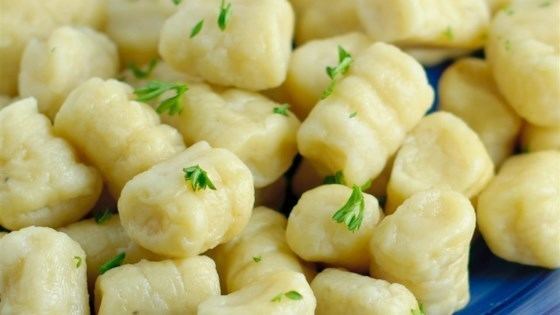 | ||
Similar Ravioli, Tortellini, Risotto, Tagliatelle, Ricotta | ||
Homemade gnocchi with peas and parmesan gordon ramsay
Gnocchi (/ˈnjɒki, ˈnɒ-, ˈnoʊ-, ˈnɔː-/ N(Y)OK-ee or NOH-kee, NAW-kee; [ˈɲɔkki], singular gnocco) are various thick, soft dough dumplings that may be made from semolina, ordinary wheat flour, egg, cheese, potato, breadcrumbs, cornmeal, or similar ingredients, with or without flavourings of herbs, vegetables, cocoa, or prunes. The dough for gnocchi is most often rolled out, then cut into small pieces of about the size of a cork. They are then pressed with a fork or a cheese grater to make ridges which hold sauce. Alternatively, they are simply cut into little lumps. Gnocchi are usually eaten as a replacement for pasta as a first course, but they can also be served as a contorno (side dish) to some main courses.
Contents
- Homemade gnocchi with peas and parmesan gordon ramsay
- Beth s vegetarian gnocchi pesto recipe entertaining with beth
- Origin
- Industrial manufactured gnocchi
- Storing and packaging
- Regional varieties
- Croatia
- Poland
- France
- South America
- References
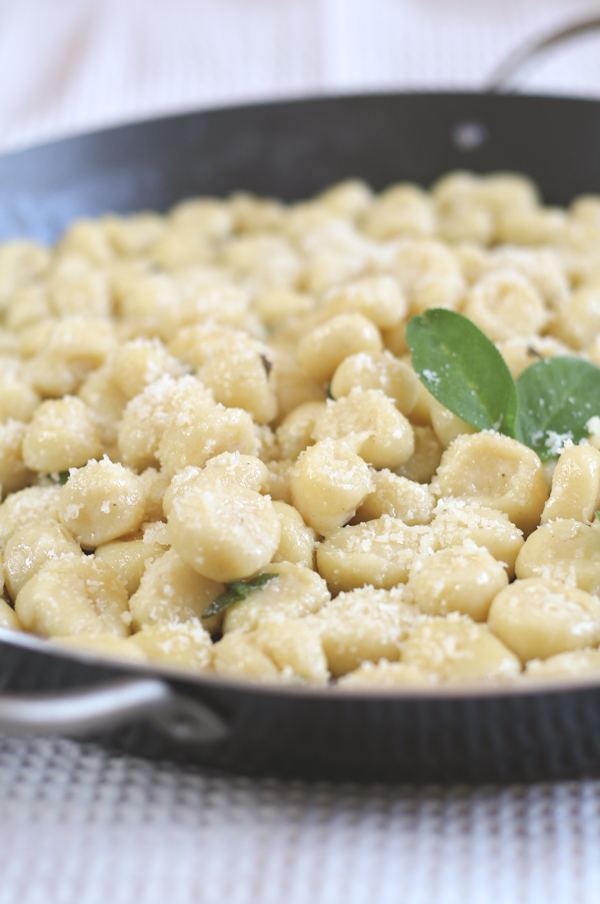
Like many Italian dishes, gnocchi have considerable variation in recipes and names across different regions. For example, Lombard and Tuscan malfatti (literally "poorly made") are made with ricotta, flour and spinach, as well as the addition of various other herbs if required, similar to Tuscan gnudi which distinctively contains less flour; Campanian strangulaprievete are flour-based gnocchi, just like Apulian cavatielli and Sardinian malloreddus, and so on. Gnocchi are commonly cooked on their own in boiling salted water and dressed with various sauces depending on the type, and recipe used. Some gnocchi can be made from pieces of cooked polenta or semolina, which is spread out to dry and then layered with cheese and butter and finished in the oven.
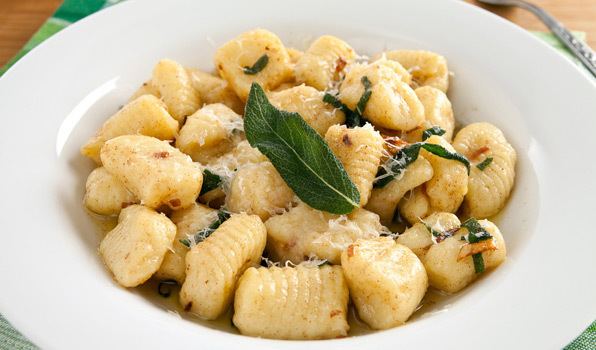
Gnocchi are eaten as a first course (primo piatto), as an alternative to soups (minestre) or pasta. They are generally home-made in Italian and diaspora Italian households. They may also be bought fresh from specialty stores. In supermarkets, industrially produced packaged gnocchi are widely available refrigerated, dried, or frozen. Common accompaniments of gnocchi include melted butter with sage, pesto, as well as various sauces.
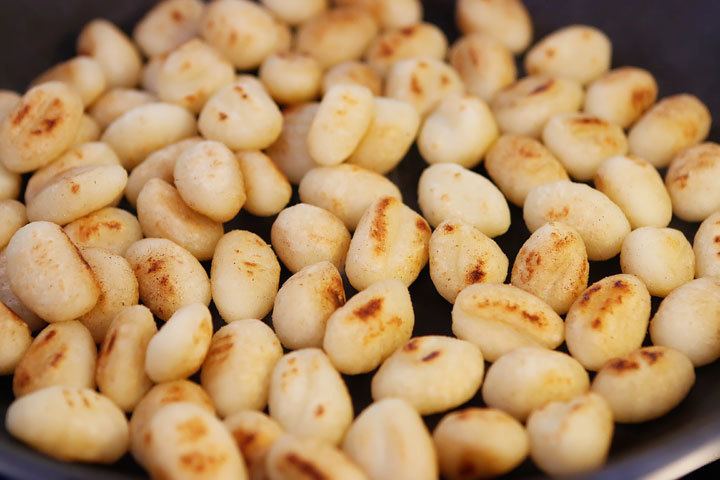
Gnocchi can be purchased ready made from grocery stores or they can be hand made. Their preparation is similar to pasta as they are cooked by boiling and then served with a sauce. If miniature gnocchi are wanted for soup they can be made by pressing the dough through a coarse sieve or a perforated spoon.

Beth s vegetarian gnocchi pesto recipe entertaining with beth
Origin
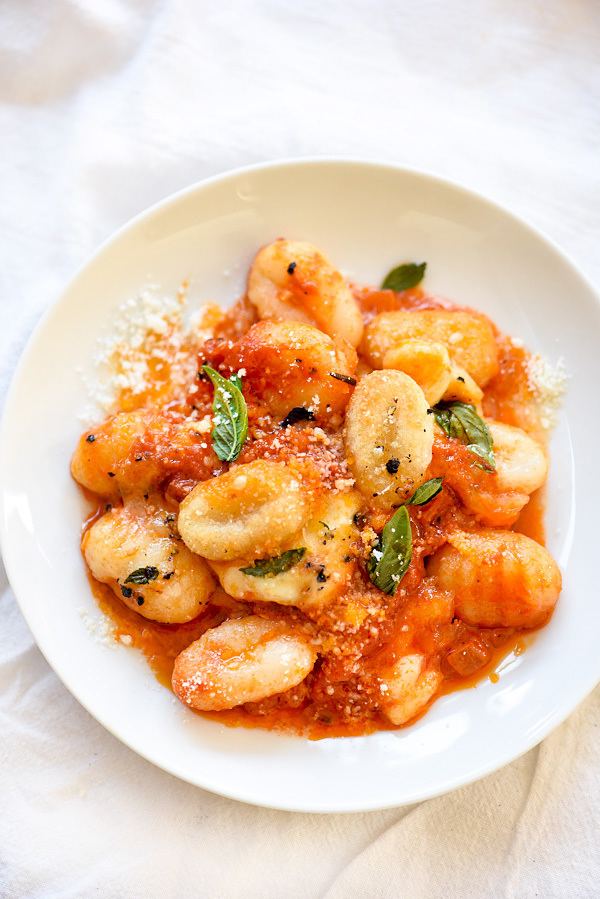
The word gnocchi may be derived from the Italian word nocchio, meaning a knot in wood, or from nocca (meaning knuckle). It has been a traditional type of Italian pasta of (probable) Middle Eastern origin since Roman times. It was introduced by the Roman legions during the expansion of the empire into the countries of the European continent. In the past 2,000 years, each country has developed its own specific type of small dumpling, with the ancient gnocchi as their common ancestor. In Roman times, gnocchi were made from a semolina porridge-like dough mixed with eggs, and are still found in similar forms today, particularly the oven-baked gnocchi alla romana and Sardinia's malloreddus which do not contain eggs.

The use of potato is a relatively recent innovation, occurring after the introduction of the potato to Europe in the 16th century. Potato gnocchi are particularly popular in Abruzzo, Friuli-Venezia Giulia, Veneto, Ciociaria and other provinces of Latium. As with other mashed potato dishes they are best prepared with starchy potatoes to keep a light texture.
Industrial manufactured gnocchi
A study conducted with the potato puree showed that, between two samples analyzed, the product which engaged in dual lower pressure treatments resulted in the most suitable production of gnocchi in terms of physicochemical and textural properties. However, it did not provide evidence for aggregation phenomena responsible for the hard lumps, which may occur in this type of semi-finished product. Moreover, the textural properties of gnocchi dough were not influenced by the different formulation as was expected.
Among the ingredients involved in the preparation of the different samples, what seemed to be the biggest factor affecting the quality features of gnocchi dough was soft wheat flour. As a result of the interactive effect of the ingredients on the physicochemical and textural traits of the different types of dough, a uniform and well-defined division among the samples was not obtained. When comparing the different kinds of gnocchi, the optimal physicochemical and textural properties were detected in the sample, which was made with fresh tubers. Not only was this caused by the use of fresh steam cooked in potatoes, but the pasteurized liquid eggs and the absence of any kind of emulsifier, additive, or preserving substance played a role as well.
Storing and packaging
Gnocchi that are home-made are usually consumed on the same day that they are made, whereas industrially manufactured gnocchi have a shelf life of approximately two months at 2 degrees Celsius.
Commercial gnocchi are often sold under modified atmospheric packaging, and may achieve a shelf life of two weeks under refrigeration.
Regional varieties
One variety, gnocchi di pane (literally "bread lumps"), derived from the Semmelknödel, is made from breadcrumbs and is popular in Friuli-Venezia Giulia, Veneto and Trentino-Alto Adige/Südtirol. Another variety from the latter region is spinach gnocchi.
Croatia
Gnocchi are a very popular and often served dish in coastal Croatia, typically being served as a first course or a side dish with Dalmatinska pašticada. The Croatian name for Gnocchi is 'njoki'.
Poland
An almost identical creation are 'Kluski Leniwe' (Lazy Noodles), but do not contain egg. Often they are spiced with various herbs like Pepper (Papryka), Cinnamon, Allspice, etc.. Similar in nature (shape) are 'Kopytka' (Hooves) - a simple dough dumpling in the shape of a diamond - which do not contain cheese. Both are often served with sour cream, butter, caramelized onion, mushroom sauce, or gravy.
France
The name is also used in France in the dish known as gnocchis à la parisienne, a hot dish comprising gnocchi formed of choux pastry served with Béchamel sauce.
A specialty of Nice, the gnocchi de tantifla a la nissarda, is made with potatoes and wheat flour.
A variant of gnocchi de tantifla a la nissarda is la merda dé can, literally, "the dog shit". It is made with potatoes, wheat flour, eggs and blette (Swiss chard), which is also used for the tourte de blette. La merda dé can is longer than the original gnocchi.
South America
Due to the significant number of Italian immigrants who arrived in Argentina, Brazil, Paraguay and Uruguay, gnocchi, ñoqui (Spanish, [ˈɲoki]) or nhoque (Portuguese, pronounced: [ˈɲɔki]) is a popular dish, even in areas with few Italian immigrants. In Brazil, Uruguay, Paraguay, and Argentina there is a tradition of eating gnocchi on the 29th of each month, with some people putting money beneath their plates to bring prosperity. Indeed, in Argentina ñoqui is slang for a bogus employee (according to corrupt accountancy practices, and/or, in the public sector, the distribution of political patronage), who only turns up at the end of the month to receive her or his salary.
